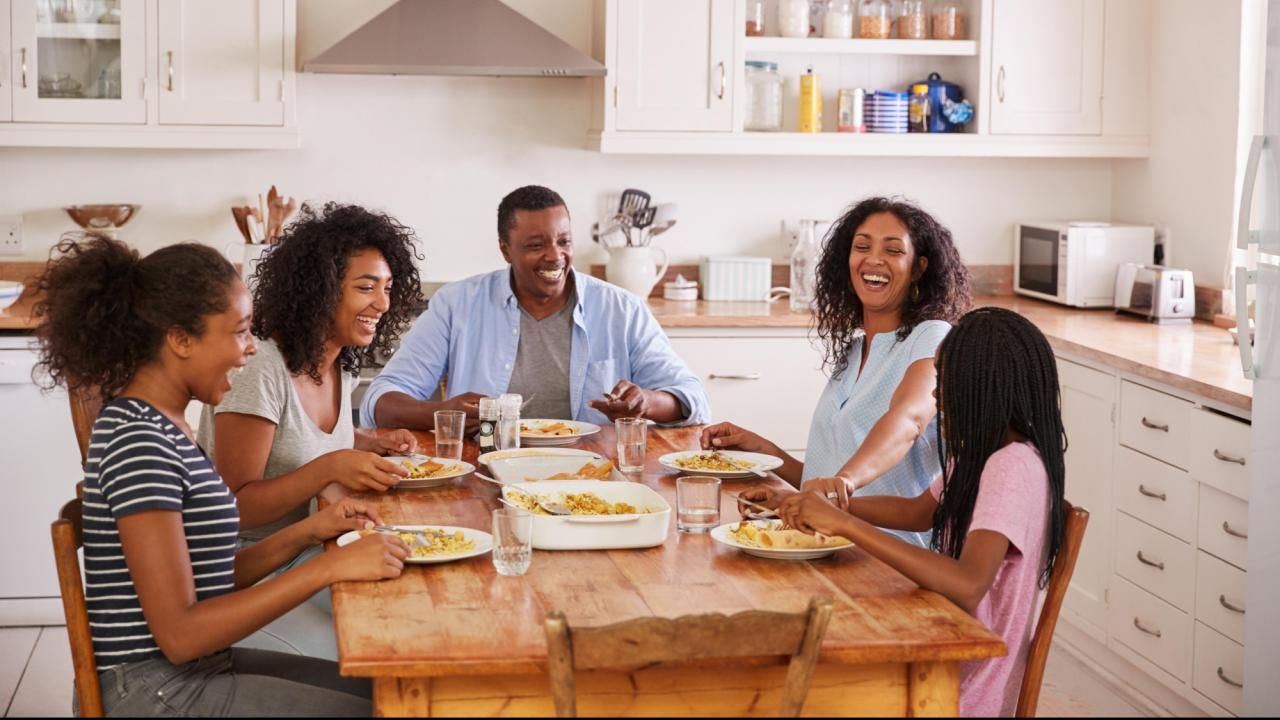Back-to-school: Disrupting your schedule

Mealtime is often the perfect place to check in with kids about their day and do a mental health check.
For my husband and I, we had the rule to have one interrupted family meal night a week. No disruption was allowed on family night, whether it was soccer, hockey, lacrosse, cultural activities or the library.
On these nights, we took turns leading our favorite activities. My husband loved backgammon, my son played Monopoly, and my daughter watched her favorite shows. When my sister-in-law lived with us for a few years, she got her own specialty night, too.
Throughout the years, even teenage years, our schedule was hectic and full of countless extracurriculars or church events. Despite this, we always kept one or two nights a week for family.
Family nights have been vital to me and my family. I’ve seen my relationships with my children and husband benefit thanks to this regular time together.
The routine of regularly sharing meals forms a sense of family closeness and unity. Though the hustle and bustle of daily life can get in the way, it’s vital to set aside time to join around the table.
According to the organization Educational Connections, students who eat dinner with their families are more likely to:
- Be emotionally satisfied while having lower stress levels.
- Maintain positive peer relationships and overall healthier eating habits.
- Refrain from smoking, drinking, and doing drugs.
- Do well in school – 40% of students have a higher likelihood of earning As and Bs in school if they enjoy regular family meals.
Remember that family dinners aren’t just about being around the table all at once. It’s more about how you spend the dinner together, prioritizing the time to be engaged and connected with your family.
For example, we encouraged our children to invite their cousins and their friends to join in our family nights. We loved getting to hear from them and their friends about their weeks. They shared the latest school gossip or the funny moments they had.
We took time during the meal to ask thoughtful questions and be fully present. As parents, we listened and showed them we valued what they were saying and that it was important. Our goal was to build up their self-image.
Inviting friends to the table
We invited our children's friends over routinely because we wanted to get to know their friends and learn more about why they picked who they did as peers.
This also gave us the opportunity to see how they handled conflict with someone outside our home who was not a relative. We could see firsthand the dynamic of peer pressure.
While not every family night was without its disagreements (we even got a hole in the wall once!), this time gave us a better glimpse into our children’s lives as they grew up.
By seeing this, we could better counsel and talk with our kids about their community. Now, we are so proud to see the friends our children have selected as adults.
During our son’s teenage years, we would habitually tell him this statement:
“You were running well; who hindered you that ye should not obey the truth? Who agitated you? In other words, you were running so well, who got you off track?
Do you know how often the wrong person in your child or teen's life can change their trajectory? We’ve known students who have never recovered from the decisions they made while in middle and high school.
But with the right person in your student’s life, your kid can be at their best. I saw that personally this year with several high school students who started the year with average GPAs. When they befriended a peer who excelled academically, their grades began to rise because they wanted to emulate their friend and champion her success.
Spotting peer pressure
When you have your children’s friends over, you might notice peer pressure. There are ways to help with this.
Peer pressure is an external force of influence on decisions that impact physical and mental health. Around 90 percent of teens have experienced peer pressure.
At its worst, pressure can hinder students’ strong self-confidence and can even have physical consequences. If your child has tied their feelings of worth to others’ opinions, peer pressure can leave them feeling hurt, anxious and angry.
As a life coach, I've found that questions are very powerful in countering the impacts of this, so I teach teens how to ask themselves questions.
With your child, start asking questions in a safe space. Have a mindset of empathy as you begin the conversation. By asking your teens simply crafted questions, you create an opportunity for change.
Some questions to ask during tough conversations are:
- What do you want?
- What does it look like to reach your goals?
- What steps do you need to take?
- How do you feel now?
- How do you think achieving this would make you feel?
Gale McKoy Wilkins is a wife, mom, grandparent and family life coach. She is the founder of Project Arrow, an evidence-based peer-to-peer and leadership program teaching middle, high school and first-year college students how to deal with trauma and crisis using life coaching. It's the first life coaching organization in the state to receive funding from the Department of Public Instruction and the first to implement life coaching in a school setting.









